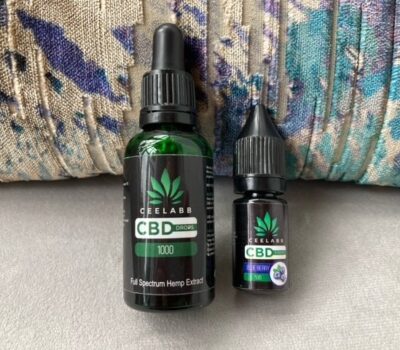

Food Service Industry
Over the ages, hygiene as well as food safety needs have evolved right into the rigorous conditions that employees in the food market face today. In the past, no health and wellness assessor would certainly have shut down your bakery because of maggots in the dough, as well as a chef might conveniently get away with simmering a soup skilled with ash from the cigarette hanging around of his mouth. Throughout the years, many individuals have actually reported coming to be violently ill, and some unlucky customers have actually died from consuming infected food … and so came the birth of the Food Safety as well as Sanitation legislation.
Now what does food security and cleanliness involve microbiology? Everything! Allow’s very first take a look at microbiology. Simplifying, you obtain mini which, basically, suggests you require a microscopic lense to see it. After that you have biology which is a study of microorganisms of all sizes and shape. These tiny organisms have names that I’m certain you’re currently aware of – infection, bloodsuckers, fungis, and microorganisms. Microorganisms is the most usual source of food-borne illness, and because of this, is dealt with more boldy than the various other 3 ranges. There are 4 sorts of microorganisms that employees in the food sector require to be familiar with:
Over the ages, hygiene as well as food safety needs have evolved right into the rigorous conditions that employees in the food market face today. In the past, no health and wellness assessor would certainly have shut down your bakery because of maggots in the dough, as well as a chef might conveniently get away with simmering a soup skilled with ash from the cigarette hanging around of his mouth. Throughout the years, many individuals have actually reported coming to be violently ill, and some unlucky customers have actually died from consuming infected food … and so came the birth of the Food Safety as well as Sanitation legislation.
Now what does food security and cleanliness involve microbiology? Everything! Allow’s very first take a look at microbiology. Simplifying, you obtain mini which, basically, suggests you require a microscopic lense to see it. After that you have biology which is a study of microorganisms of all sizes and shape. These tiny organisms have names that I’m certain you’re currently aware of – infection, bloodsuckers, fungis, and microorganisms. Microorganisms is the most usual source of food-borne illness, and because of this, is dealt with more boldy than the various other 3 ranges. There are 4 sorts of microorganisms that employees in the food sector require to be familiar with:
- Harmless bacteria – Just like the name states, safe germs neither damage nor help us. This is the most common type of bacteria, as well as because of its harmless effects, we can just ignore it.
- Handy germs – Yes, microorganisms can be handy to us. Useful germs can be located in the gastrointestinal system and also its task is to eliminate off any type of unsafe bacteria we may be exposed to. We in fact eat this type of microorganisms voluntarily, in foods like cheese and yogurt.
- Undesirable germs – In the food service market, this is the germs that triggers one of the most problems. It’s responsible for triggering food spoilage and also waste. Whether or not it can cause health problem is fairly inconclusive, as it makes its visibility popular by expanding mould or rot. This is the prime sort of germs that food solution workers require to stop, as it causes higher food price and much less revenue.
- Virus – This is the type of germs that needs to be protected against in all expense. Most virus can not be seen, smelled, or tasted but they are the root of food-borne health problem. A customer that ends up being ill in your establishment because of virus can ruin your credibility.
So, just how do we avoid pathogens from creating? Exercise appropriate hygiene and also hygiene. There are six particular conditions that bacteria needs for development:

- Food – Bacteria requires to consume … it is a living microorganism. The favoured sort of food are those that contain a lot of healthy protein like meats, eggs, and dairy products
- Temperature level – Bacteria, like people, has a convenience zone in regards to temperature level. It can not live below or above its convenience area. You may already understand this regulation by the title The Danger Zone. Prime bacterial development takes place within 41F to 140F (5C – 50C). Maintaining food over of listed below this variety will make certain that bacteria remains inactive, or recedes.
- Moisture – Bacteria can not live on dry foods … it calls for water to enhance food absorption. Naturally, we can not maintain all foods dry, yet seeing to it that foods having a great deal of moisture are effectively stored (as defined in condition number 2) will certainly shield it from bacterial growth.
- Air – This problem is in fact fairly complicated. The majority of microorganisms are known as aerobic, suggesting they need oxygen to survive, however there is one more kind of germs that prospers when no oxygen exists – it’s called anaerobic. Anaerobic germs, like botulism, is among one of the most risky kinds of food-borne illness, as well as can lead to fatality. This is why you are warned not to purchase canned foods that may be nicked or bulging … anaerobic germs grows inside the can.
- Harmless bacteria – Just like the name states, safe germs neither damage nor help us. This is the most common type of bacteria, as well as because of its harmless effects, we can just ignore it.
- Handy germs – Yes, microorganisms can be handy to us. Useful germs can be located in the gastrointestinal system and also its task is to eliminate off any type of unsafe bacteria we may be exposed to. We in fact eat this type of microorganisms voluntarily, in foods like cheese and yogurt.
- Undesirable germs – In the food service market, this is the germs that triggers one of the most problems. It’s responsible for triggering food spoilage and also waste. Whether or not it can cause health problem is fairly inconclusive, as it makes its visibility popular by expanding mould or rot. This is the prime sort of germs that food solution workers require to stop, as it causes higher food price and much less revenue.
- Virus – This is the type of germs that needs to be protected against in all expense. Most virus can not be seen, smelled, or tasted but they are the root of food-borne health problem. A customer that ends up being ill in your establishment because of virus can ruin your credibility.
So, just how do we avoid pathogens from creating? Exercise appropriate hygiene and also hygiene. There are six particular conditions that bacteria needs for development:
- Food – Bacteria requires to consume … it is a living microorganism. The favoured sort of food are those that contain a lot of healthy protein like meats, eggs, and dairy products
- Temperature level – Bacteria, like people, has a convenience zone in regards to temperature level. It can not live below or above its convenience area. You may already understand this regulation by the title The Danger Zone. Prime bacterial development takes place within 41F to 140F (5C – 50C). Maintaining food over of listed below this variety will make certain that bacteria remains inactive, or recedes.
- Moisture – Bacteria can not live on dry foods … it calls for water to enhance food absorption. Naturally, we can not maintain all foods dry, yet seeing to it that foods having a great deal of moisture are effectively stored (as defined in condition number 2) will certainly shield it from bacterial growth.
- Air – This problem is in fact fairly complicated. The majority of microorganisms are known as aerobic, suggesting they need oxygen to survive, however there is one more kind of germs that prospers when no oxygen exists – it’s called anaerobic. Anaerobic germs, like botulism, is among one of the most risky kinds of food-borne illness, as well as can lead to fatality. This is why you are warned not to purchase canned foods that may be nicked or bulging … anaerobic germs grows inside the can.
For more info, visit at https://www.havtech.com/markets-served/restaurants-and-entertainment/.












